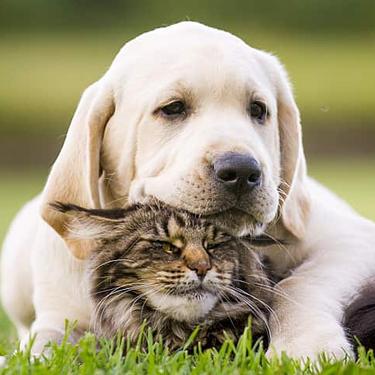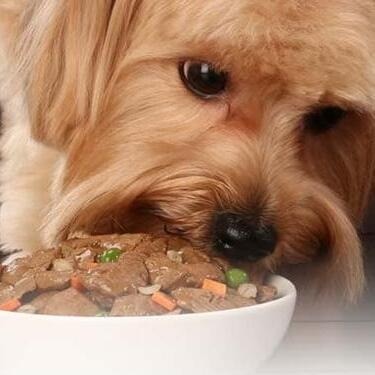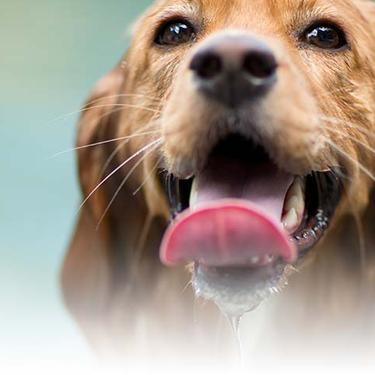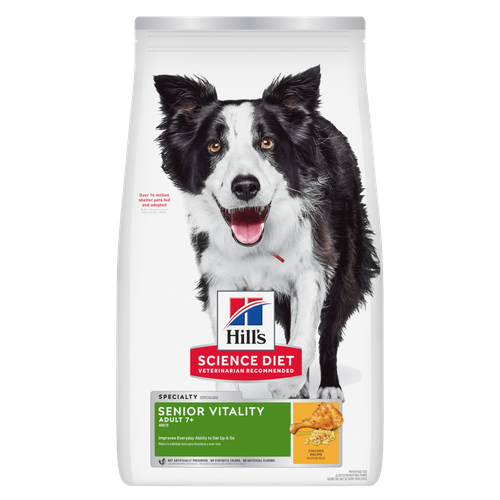
-
Find the right food for your petTake this quiz to see which food may be the best for your furry friend.Find the right food for your petTake this quiz to see which food may be the best for your furry friend.Featured products
 Puppy Lamb Meal & Brown Rice Recipe
Puppy Lamb Meal & Brown Rice RecipeVital nutrients to support 5 essential building blocks for lifelong health
Shop Now Hill's Science Diet Adult 7+ Senior Vitality Small & Mini Chicken & Rice Recipe Dog Food
Hill's Science Diet Adult 7+ Senior Vitality Small & Mini Chicken & Rice Recipe Dog FoodImproves everyday ability to get up & go
Shop Now Puppy Large Breed Chicken & Brown Rice Recipe
Puppy Large Breed Chicken & Brown Rice RecipeVital nutrients to support 5 essential building blocks for lifelong health
Shop NowFeatured products Adult 7+ Chicken Recipe Cat Food
Adult 7+ Chicken Recipe Cat FoodSupports energy level and beautiful fur in mature cats
Shop Now Adult Sensitive Stomach & Skin Cat Food
Adult Sensitive Stomach & Skin Cat FoodHighly digestible food that is gentle on the stomach. Nourishes skin & promotes lustrous fur.
Shop Now Adult Indoor Chicken Recipe Cat Food
Adult Indoor Chicken Recipe Cat FoodSupports energy level and beautiful fur in indoor cats
Shop Now -
Dog
- Dog Tips & Articles
-
Health Category
- Weight
- Food & Environmental Sensitivities
- Urinary
- Digestive
- Joint
- Kidney
-
Life Stage
- Puppy Nutrition
- Adult Nutrition
Cat- Cat Tips & Articles
-
Health Category
- Weight
- Skin & Food Sensitivities
- Urinary
- Digestive
- Kidney
-
Life Stage
- Adult Nutrition
Featured articles The Incredible Science Behind Your Pet's Microbiome
The Incredible Science Behind Your Pet's MicrobiomeLearn what a pet's microbiome is, how it contributes to your pet's gut & overall health, and why nutrition is important in maintaining healthy microbiomes.
Read More Pet Food Storage Tips
Pet Food Storage TipsDiscover how and where to store your dry, as well as canned, dog and cat food. Learn how to find the "best before" dates on all Hill's pet food packaging.
Read More Water
WaterDiscover why water is the most important nutrient for your dog or cat to live a healthy life. Find out how much water your pet should consume each day.
Read More -


A dog’s pregnancy averages 63 days in length and nursing continues for a few more weeks. This may be the most important time in your dog’s life when it comes to precise nutrition. For a pregnant or nursing dog, malnutrition can lead to serious health issues and jeopardize the health of her puppies.1 Talk to your veterinarian about your specific dog’s unique needs and keep these critical nutritional considerations in mind:
- Food for pregnant or nursing dogs must include sufficient calories to meet increased energy needs for milk production and the growth of puppies
- Increased fat helps satisfy the higher demand for calories
- High digestibility is important to help maximize calorie intake from smaller amounts of food
- The mother’s milk production and the bone growth of her puppies require more calcium and phosphorus
- More protein is needed to nourish the healthy development of puppies
- DHA for developing puppies’ nervous systems
Frequently asked questions regarding pregnancy, nursing and nutritional essentials.
What is digestibility and why does it matter?
High digestibility translates to more efficient nutrient absorption by a pregnant or nursing dog’s body. It’s important because it helps a dog maximize the nutrition in every bite she eats. This can be crucial because there’s less space in a pregnant dog’s abdomen,.
Why more energy and fat?
Pregnant and nursing dogs have very high energy needs. In fact, nursing dogs have 4-8 times the energy requirements of healthy adult dogs. Increased fat in precisely balanced nutrition helps supply more energy.
What should I feed my dog while she’s pregnant and nursing?
We recommend feeding Hill’s® Science Diet® Puppy Foods as soon as possible. These formulas feature essential nutrients in sufficient amounts and help developing puppies get off to a great start in life. Ask your veterinarian to recommend one of these Science Diet® puppy foods:
- Puppy Healthy Development
- Puppy Small & Toy Breed
- Puppy Small Bites
- Puppy Savory Chicken Entrée (canned)
Can I feed Science Diet® Puppy Large Breed dog food to my pregnant or nursing dog? What if she is a large breed dog?


Tasty Tips
We do not recommend Science Diet® Puppy Large Breed for pregnant or nursing dogs. It does not provide enough calcium and energy to meet a dog’s needs during this special time. The food of choice for all pregnant or nursing dogs regardless of breed is Science Diet® Puppy food in varieties listed above.
Are there special instructions for feeding my pregnant or nursing dog?
Feed your pregnant dog the amount suggested on the food package, and keep feeding her puppy food until her puppies are finished weaning. Ask your veterinarian if you should make food available to her at all times after the puppies are born. This can help wean the puppies to a regular food and you’ll have peace of mind knowing their mother’s energy needs are being met.
When do I wean my puppies?
Most puppies begin eating solid food at 3-4 weeks of age. Weaning should be effectively completed at 6-7 weeks of age. 2 You will then need to consider which puppy food is appropriate for your puppies based on breed and expected body size when your puppies become adult dogs.
When should I see my vet?
Visit your veterinarian weekly if possible during pregnancy and nursing to check her condition and make sure her nutritional needs are being met. It’s important that you set up a specific schedule with your veterinarian to determine how often your dog should be examined during pregnancy and after puppies are born.
Start puppy care right.
Keeping a record of your puppies’ weights, development and activity every 1 or 2 days2 can be very helpful for your veterinarian’s routine assessments in the first year of life.
1 Small Animal Clinical Nutrition, 4th Edition. Normal Dogs; Pregnancy in Dogs; p. 238
2 Small Animal Clinical Nutrition, 4th Edition. Growing Dogs: Weaning Period; p. 247


One of our staff authors prepared this article for you
Related products

Improves everyday ability to get up & go

Improves Everyday Ability to Get Up & Go

Vital nutrients to support 5 essential building blocks for lifelong health

Vital nutrients to support 5 essential building blocks for lifelong health
Related articles

Learn basic steps & precautions for treating a cut on your dog, including what you can put on the cut, and when you should take them to the vet.

Understand the role that Omega-6 and Omega-3 fatty acids play in your dog's overall health, and how you can ensure they are getting enough.

Discover fun and engaging games and other ways to help your dog exercise, keeping him happy and healthy.

Learn how to stop your dog from begging at the dinner table, and understand how it can help contribute to his health.

Put your dog on a diet without them knowing
Our low calorie formula helps you control your dog's weight. It's packed with high-quality protein for building lean muscles, and made with purposeful ingredients for a flavorful, nutritious meal. Clinically proven antioxidants, Vitamin C+E, help promote a healthy immune system.
Put your dog on a diet without them knowing
Our low calorie formula helps you control your dog's weight. It's packed with high-quality protein for building lean muscles, and made with purposeful ingredients for a flavorful, nutritious meal. Clinically proven antioxidants, Vitamin C+E, help promote a healthy immune system.

